
How to Use Vant Battery 5200mAh 50C 11.1V 57.72Wh High Discharge Li-Po Battery: Examples, Pinouts, and Specs
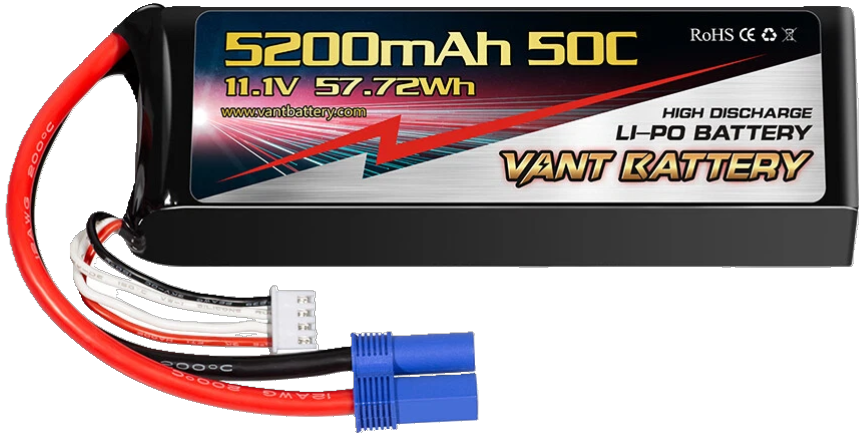
 Design with Vant Battery 5200mAh 50C 11.1V 57.72Wh High Discharge Li-Po Battery in Cirkit Designer
Design with Vant Battery 5200mAh 50C 11.1V 57.72Wh High Discharge Li-Po Battery in Cirkit DesignerIntroduction
The Vant Battery 5200mAh 50C 11.1V 57.72Wh High Discharge Li-Po Battery is a high-performance lithium polymer (Li-Po) battery designed for demanding applications. With a capacity of 5200mAh, a high discharge rate of 50C, and a nominal voltage of 11.1V, this battery is ideal for powering remote-controlled (RC) vehicles, drones, and other high-drain electronic devices. Its lightweight and compact design make it a popular choice for hobbyists and professionals alike.
Explore Projects Built with Vant Battery 5200mAh 50C 11.1V 57.72Wh High Discharge Li-Po Battery
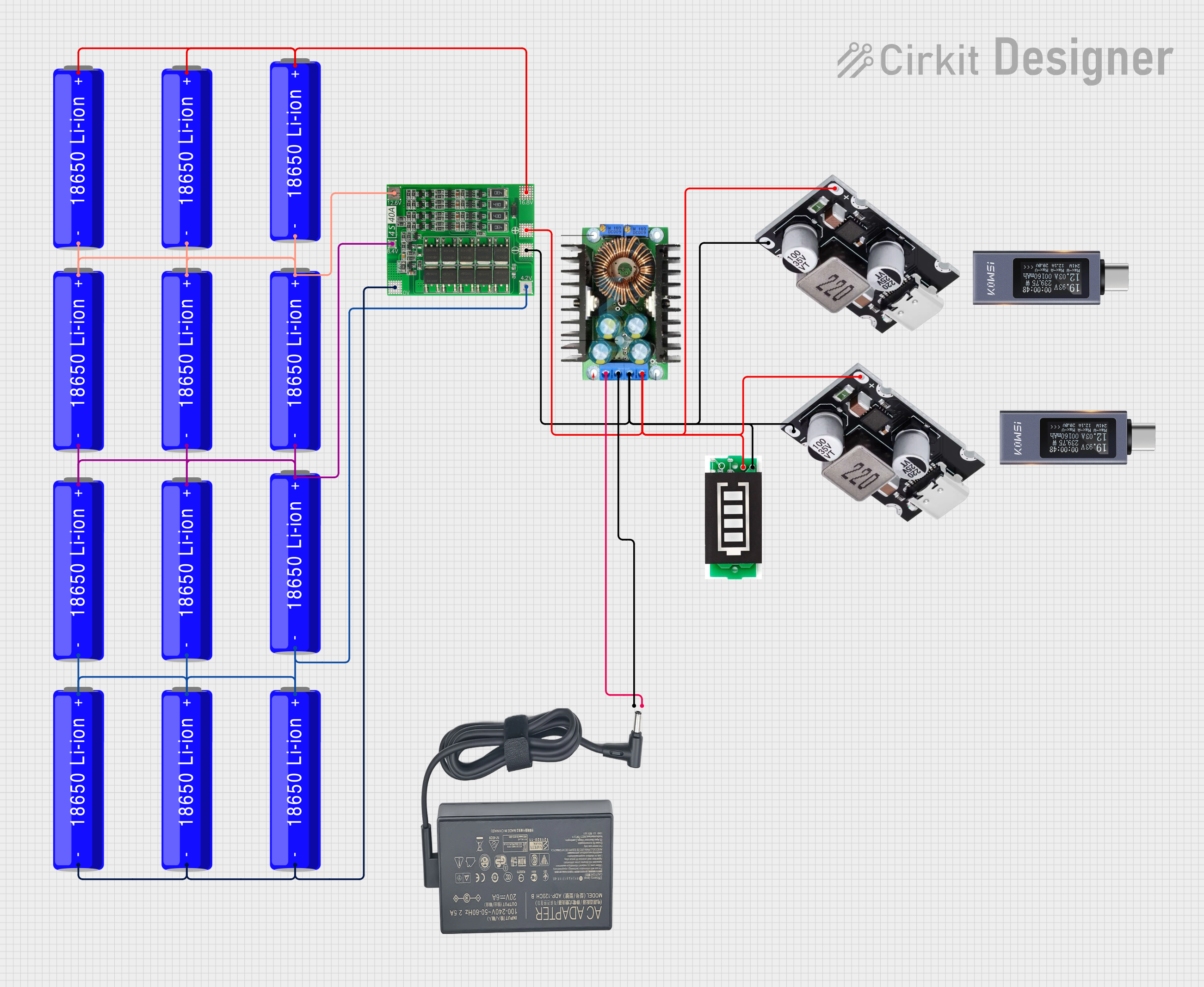
 Open Project in Cirkit Designer
Open Project in Cirkit Designer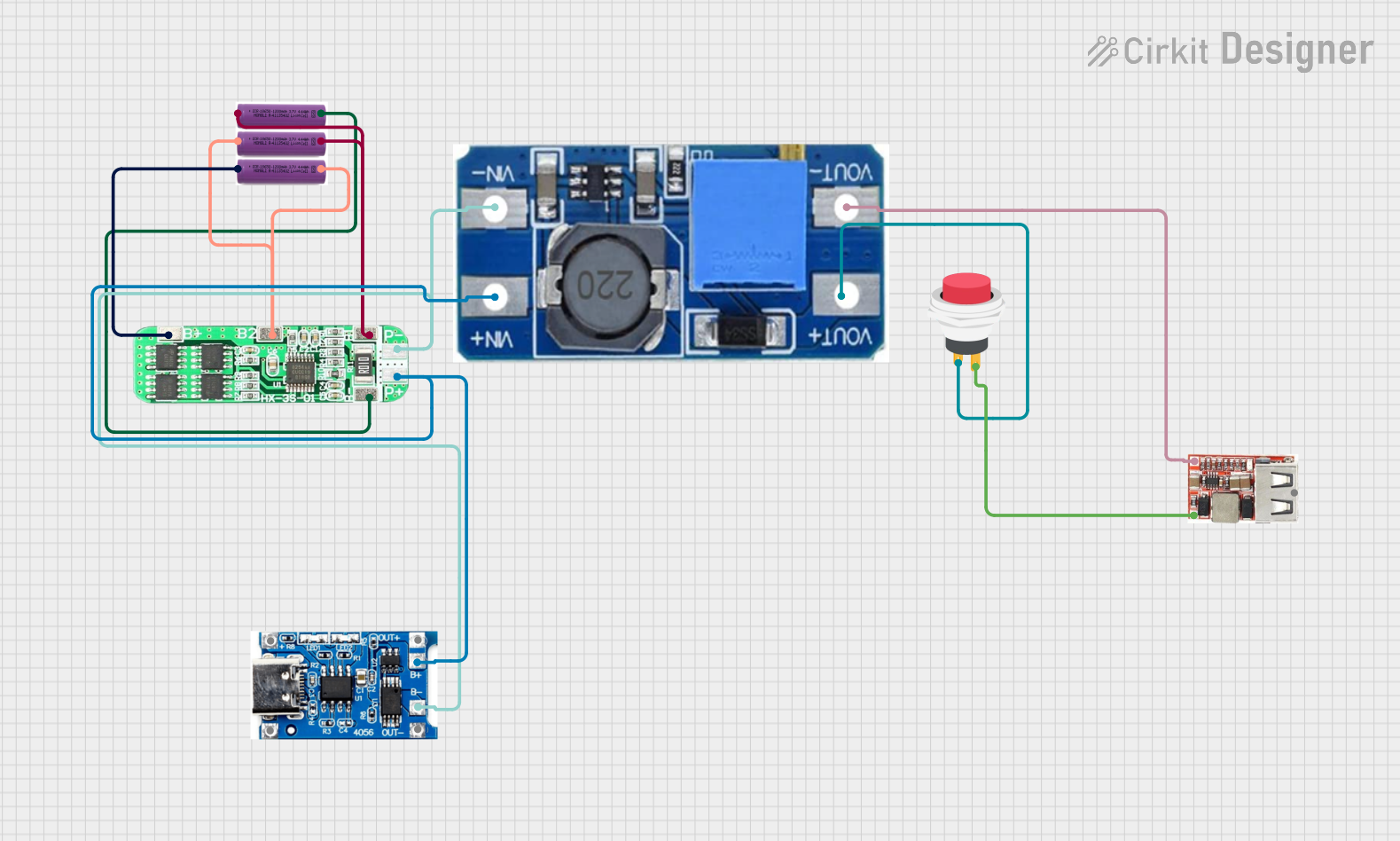
 Open Project in Cirkit Designer
Open Project in Cirkit Designer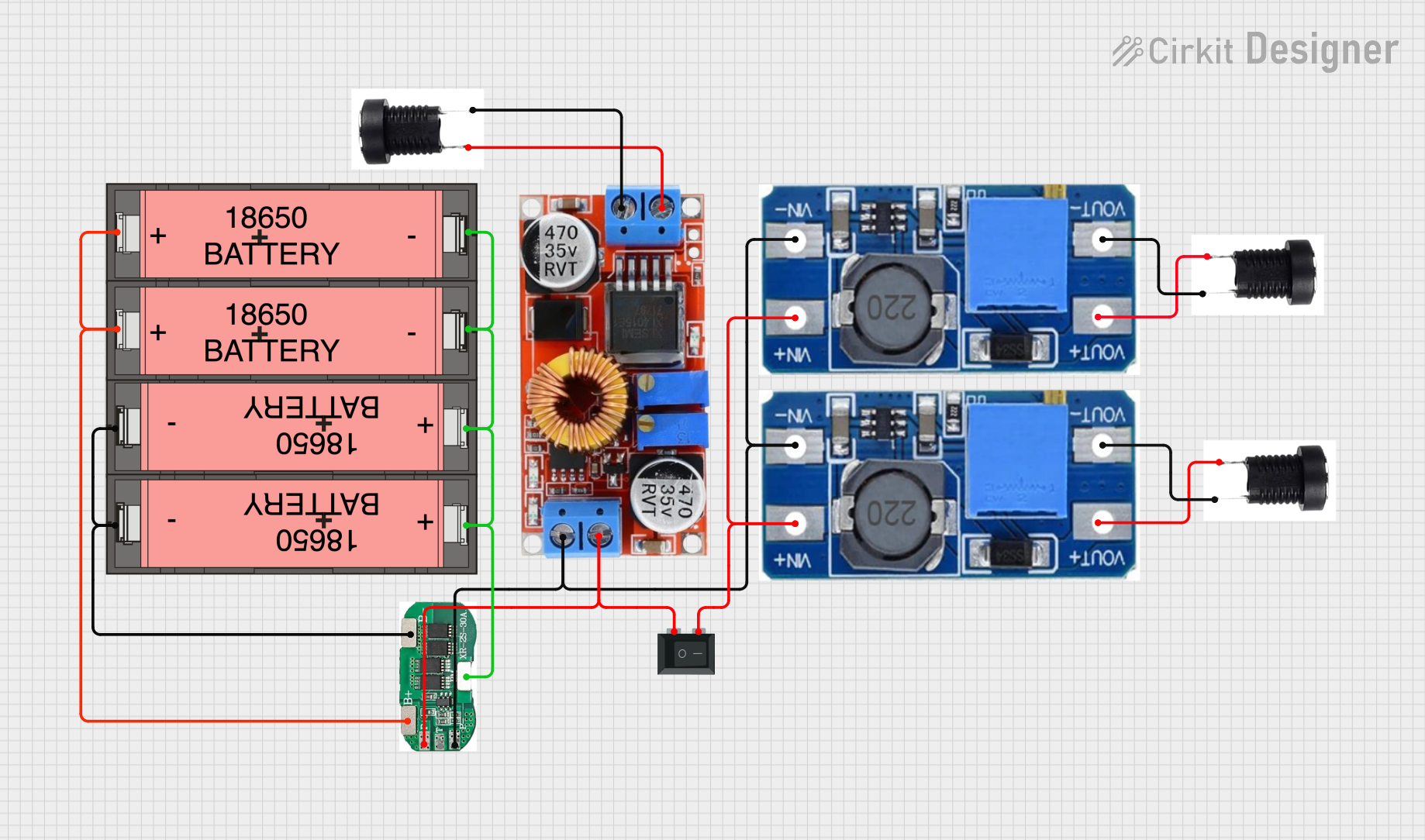
 Open Project in Cirkit Designer
Open Project in Cirkit Designer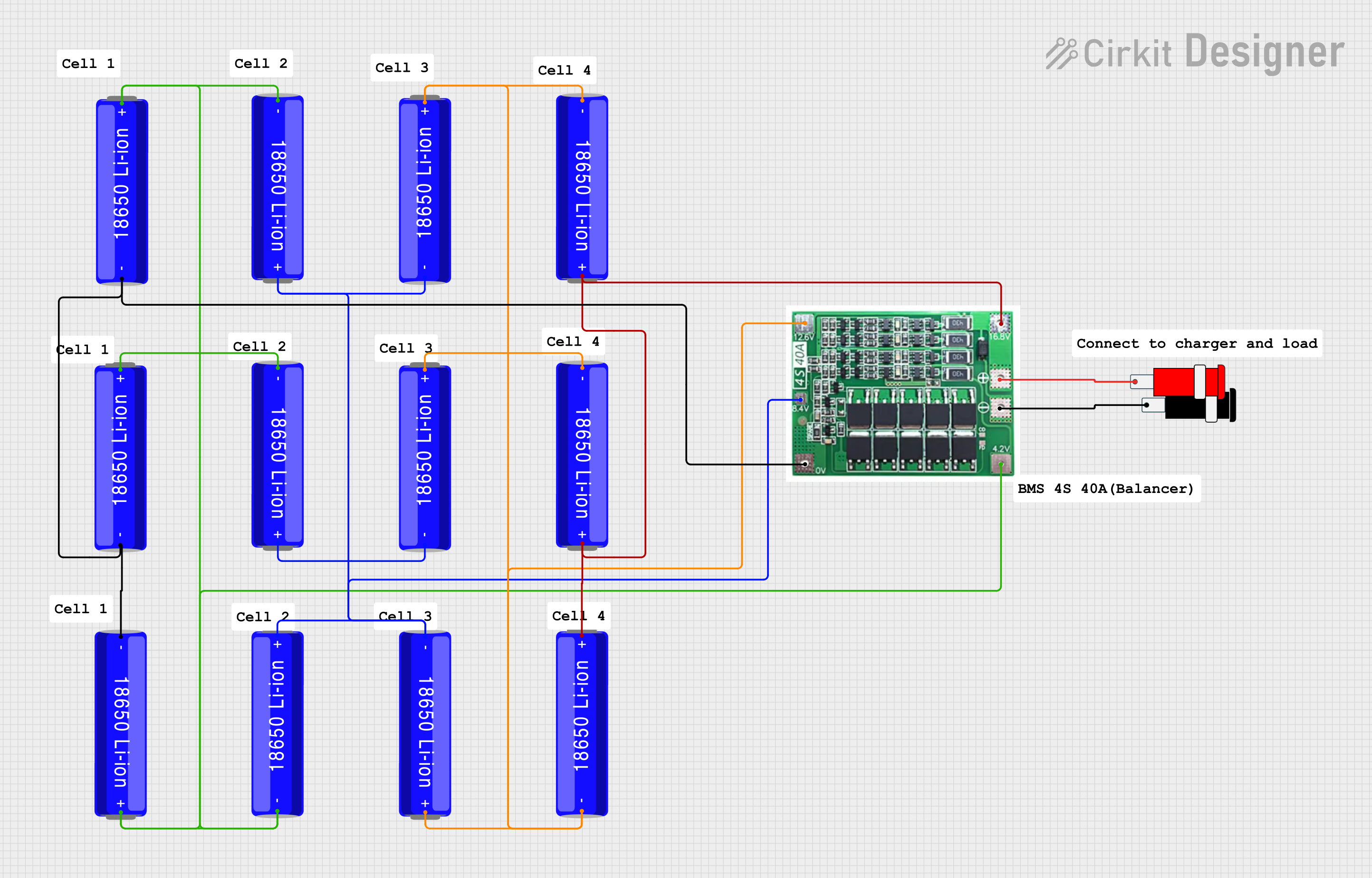
 Open Project in Cirkit Designer
Open Project in Cirkit DesignerExplore Projects Built with Vant Battery 5200mAh 50C 11.1V 57.72Wh High Discharge Li-Po Battery

 Open Project in Cirkit Designer
Open Project in Cirkit Designer
 Open Project in Cirkit Designer
Open Project in Cirkit Designer
 Open Project in Cirkit Designer
Open Project in Cirkit Designer
 Open Project in Cirkit Designer
Open Project in Cirkit DesignerCommon Applications and Use Cases
- RC cars, boats, and airplanes
- Drones and quadcopters
- Robotics projects
- High-performance electronic systems requiring a reliable power source
Technical Specifications
The following table outlines the key technical specifications of the Vant Battery 5200mAh 50C 11.1V Li-Po battery:
| Specification | Value |
|---|---|
| Manufacturer | Vant Battery |
| Part ID | Vant Battery 5200mAh 50C 11.1V |
| Battery Type | Lithium Polymer (Li-Po) |
| Capacity | 5200mAh |
| Nominal Voltage | 11.1V |
| Discharge Rate (C Rating) | 50C |
| Energy | 57.72Wh |
| Maximum Continuous Current | 260A (5200mAh × 50C) |
| Dimensions | Varies by model (check datasheet) |
| Weight | Approx. 400g |
| Connector Type | XT60 or Deans (varies by model) |
| Cell Configuration | 3S (3 cells in series) |
Pin Configuration and Descriptions
The battery typically includes two connectors: a main power connector and a balance connector. The pin configuration is as follows:
Main Power Connector (e.g., XT60 or Deans)
| Pin | Description |
|---|---|
| + | Positive terminal |
| - | Negative terminal |
Balance Connector (JST-XH, 4-pin for 3S)
| Pin | Description |
|---|---|
| 1 | Cell 1 positive |
| 2 | Cell 2 positive |
| 3 | Cell 3 positive |
| 4 | Common ground |
Usage Instructions
How to Use the Component in a Circuit
- Connect the Main Power Connector: Use the XT60 or Deans connector to supply power to your device. Ensure the polarity matches the input terminals of your device.
- Connect the Balance Connector: When charging, connect the balance connector to a compatible Li-Po charger to ensure each cell is charged evenly.
- Secure the Battery: Use a battery strap or holder to secure the battery in place, especially in RC vehicles or drones, to prevent movement during operation.
Important Considerations and Best Practices
- Charging: Always use a Li-Po-compatible charger with a balance charging feature. Set the charger to 11.1V (3S) and a current of 5.2A (1C rate) for safe charging.
- Discharging: Avoid discharging the battery below 3.0V per cell (9.0V total for 3S) to prevent damage.
- Storage: Store the battery at a voltage of 3.7-3.8V per cell (11.1-11.4V total) in a cool, dry place.
- Safety: Never puncture, short-circuit, or expose the battery to fire or water. Use a Li-Po safe bag for charging and storage.
- Temperature: Operate the battery within the temperature range specified in the datasheet (typically 0°C to 60°C).
Example: Using with an Arduino UNO
While the Vant Battery is not directly compatible with the Arduino UNO due to its high voltage, you can use a voltage regulator (e.g., LM7805 or a buck converter) to step down the voltage to 5V. Below is an example circuit and code:
Circuit Setup
- Connect the battery's main power connector to the input of a buck converter.
- Set the buck converter output to 5V.
- Connect the 5V output to the Arduino UNO's 5V pin and GND.
Arduino Code Example
// Example code to read a sensor and print data to the Serial Monitor
// Ensure the battery voltage is stepped down to 5V before connecting to Arduino
const int sensorPin = A0; // Analog pin connected to the sensor
int sensorValue = 0; // Variable to store the sensor reading
void setup() {
Serial.begin(9600); // Initialize serial communication at 9600 baud
}
void loop() {
sensorValue = analogRead(sensorPin); // Read the sensor value
Serial.print("Sensor Value: ");
Serial.println(sensorValue); // Print the sensor value to the Serial Monitor
delay(1000); // Wait for 1 second before the next reading
}
Troubleshooting and FAQs
Common Issues Users Might Face
- Battery Swelling: This can occur due to overcharging, over-discharging, or physical damage.
- Solution: Stop using the battery immediately. Dispose of it safely following local regulations.
- Uneven Cell Voltages: This may happen if the balance connector is not used during charging.
- Solution: Use a balance charger to equalize the cell voltages.
- Battery Not Powering Device: This could be due to a loose connection or a depleted battery.
- Solution: Check all connections and ensure the battery is fully charged.
Tips for Troubleshooting
- Use a multimeter to check the voltage of each cell via the balance connector.
- Inspect the connectors for damage or loose wires.
- If the battery does not charge, verify that the charger is set to the correct voltage and current.
By following this documentation, users can safely and effectively utilize the Vant Battery 5200mAh 50C 11.1V Li-Po battery in their projects.